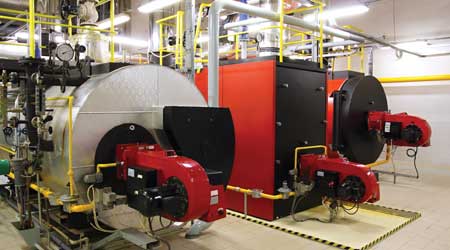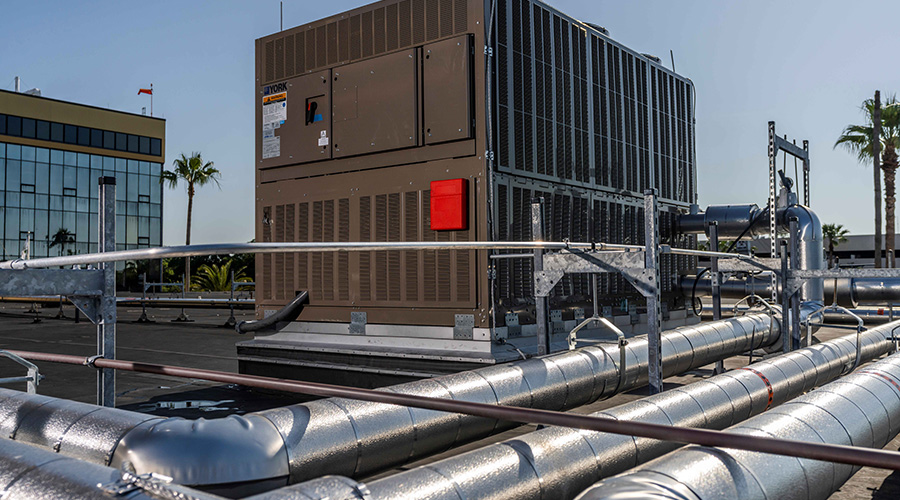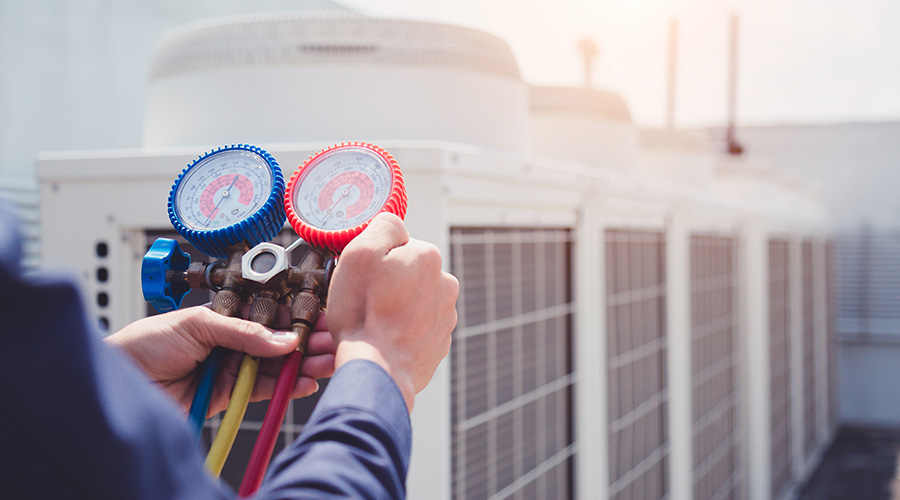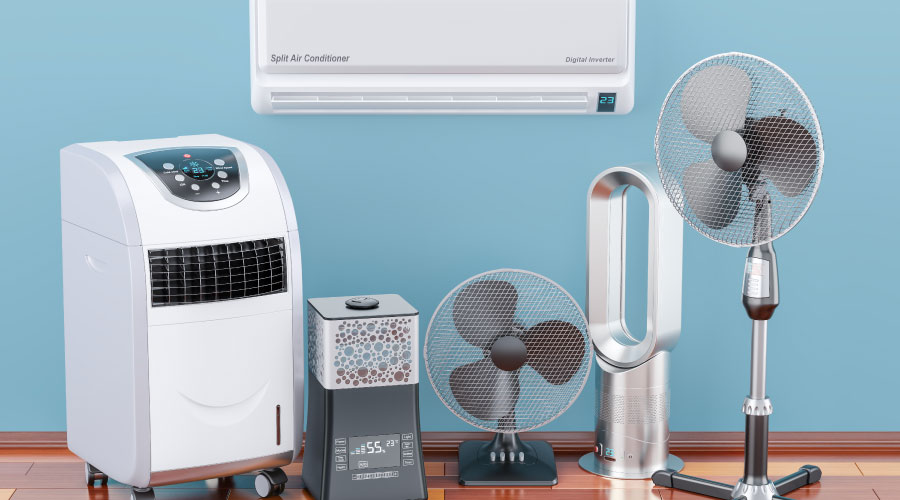 Boilers are designed for a maximum Delta T, and damage should not occur during heat up or cool down, provided it is not exceeded.
Boilers are designed for a maximum Delta T, and damage should not occur during heat up or cool down, provided it is not exceeded. 4 Ways to Wreck Your Boiler
From water-side corrosion to thermal shock or stress, these are, of course, calamities all facility manager should do their level best to avoid.
A number of conditions can result in sudden, unexpected failure of a boiler pressure vessel, often requiring a complete demolition and replacement of the boiler. These conditions are avoidable when preventative procedures and systems are put in place and followed rigorously. However, these are not always done.
The boiler calamities discussed here all involve a breach of the boiler’s pressure vessel / heat exchanger (those terms are often used interchangeably), either through corrosive action eating its way through the vessel material, or by mechanical failure due to thermal stresses resulting in cracks or separation of components. Often there are no obvious symptoms displayed during normal operation. A failure can be years in the making, or it can come on rapidly due to a sudden change in conditions. Regular maintenance inspections are key to preventing unpleasant surprises. Heat exchanger failures normally require the entire appliance to be replaced, although for smaller and newer boilers, repair or replacement of just the pressure vessel may be a reasonable option.
Here are four scenarios that will inevitably lead to a wrecked boiler:
1. Severe water-side corrosion: Poor quality of the initial water fill can cause some corrosion, but improper monitoring and adjustment of chemical treatment can result in the type of acute pH imbalance that can rapidly damage a boiler. Pressure-essel materials are literally dissolved, and the damage will be widespread — repair is usually impossible. Water quality / chemical-treatment experts who have knowledge of local water conditions should be consulted and should contribute to preventive measures. There are many nuances for them to consider, as the construction details of various heat exchangers dictate different fluid chemistries. Traditional cast iron and ferrous steel vessels need to be treated differently than copper, stainless steel, or aluminum exchangers. Large volume fire-tube boilers are treated a bit differently than lower volume water-tube boilers. Steam boilers often need special attention due to higher temperatures and the need for more make-up water. Boiler manufacturers should provide a specification that details the water quality parameters required for their products, including acceptable chemical cleaning and treatment agents. This information is sometimes difficult to access, but because acceptable water quality is always a warranty issue, designers and maintenance personnel should demand it before issuing a purchase order. Engineers should examine the specifications of all other system components, including pump and valve seals, to ensure compatibility with the proposed chemicals. Under supervision of treatment technicians, systems should be cleaned, flushed, and passivated prior to final system fill. Fill fluid should be tested and then treated to meet boiler specifications. Strainers and filters should be removed, examined, and date-tagged as being clean. Monitoring and adjustment schedules should be established, maintenance staff trained in proper procedures, and then supervised by the treatment technicians until they are satisfied with the results. It is a good idea to retain the chemical treatment experts for ongoing fluid analysis and treatment confirmation.
Heating boilers are designed for closed systems where the initial fill can last indefinitely if properly treated. Undetected water and steam leaks however, can result in continuous introduction of untreated water into the closed system, bringing dissolved oxygen and minerals into the system and diluting treatment chemicals enough to make them ineffective. Providing water meters on boiler fill piping from pressured municipal or well supply is one strategy to easily detect even small leaks. Another option is providing chemical / glycol feeder tanks when boiler fill is isolated from potable systems. Both of these setups can be monitored visually by maintenance staff or connected to BAS for automatic flagging of fluid leakage. Regular fluid analysis should also indicate a problem and provide the information required to re-adjust chemical levels.
2. Severe water-side blockage/calcification: Ongoing introduction of fresh make-up water due to water or steam leakage, can quickly layer the water side heat-exchanger components with hard-scale, creating an insulating layer that results in stress fracture from overheating of the metal. There can be enough dissolved minerals in some water supplies that just the initial fill in large volume systems can result in mineral build-up and heat exchanger hot-spot failure. Additionally, failure to properly clean and adequately flush both new and existing systems, and failure to filter particulate matter out of fill water can result in heat-exchanger contamination and blockage. Often (but not always), these conditions will cause a boiler to become noisy during burner runs, alerting maintenance personnel to the problem. The good news is that, if calcification of internal surfaces is detected early enough, cleaning procedures can be undertaken to restore the heat exchanger to like-new condition. All of the points made in the previous item regarding the engagement of water-quality experts are valid to prevent these problems from happening in the first place.
3. Severe fire-side corrosion: Acidic condensate from any fuel can form on heat-exchanger surfaces when the surface temperature is below the dew point for a particular fuel. Boilers designed for condensing operation use acid-resistant materials like stainless steel and aluminum in their heat exchangers and design them to direct the condensate to drain. Boilers not designed for condensing operation depend on the combustion gasses to always remain above the dew point so that condensate does not occur at all, or is vaporized quickly after a brief warm-up period. Steam boilers are largely immune to this problem because they normally operate well above the dew point. The introduction of weather-responsive outdoor reset controls, low temperature hydronics, and deep-night setback strategies encouraged the development of warm-water condensing boilers. Unfortunately, operators who did not understand the consequences of adding these functions to existing high-temperature systems doomed many traditional hot-water boilers to early failure — lessons were learned. Designers employ mixing valves, shunt pumps and other devices, and control strategies to provide protection to high-temperature boilers during low-temperature system operation. Care must be taken to ensure that these devices are in good working order and controls are set up properly to prevent condensing conditions in the boiler. This is the initial responsibility of the designers and commissioning agent followed by ongoing maintenance procedures. To note, low-temperature limit devices and alarms are often used in conjunction with protective equipment as insurance. Operators must be trained to avoid errors in control adjustment that might override these safety devices.
Fire-side heat exchanger contamination can also cause destructive corrosion. Contaminants come from only two sources: the fuel or the combustion air. Potential fuel contamination should be investigated, especially with fuel oil and LP gasses, but natural-gas supplies can occasionally be affected as well. “Bad” fuel will contain higher than acceptable levels of sulphur and other contaminants. Modern standards are intended to ensure purity of the fuel supply, but off-spec fuel can still find its way to boiler rooms. It is difficult to monitor and analyze the fuel itself, but frequent fire-side inspection can reveal a problem with deposition of contaminants before major damage occurs. These contaminants can be highly acidic and should be cleaned and flushed out of the heat exchanger as soon as they are detected. A continuing inspection interval should be established. Fuel suppliers should be questioned.
Combustion air contamination happens more often and can be very aggressive. There are many commonly used chemicals that can form highly acidic compounds when combined with air and fuel and heat in the combustion process. Some notorious compounds include fumes from dry-cleaning fluids, paint and paint strippers, various fluorocarbons, chlorine, and on. Even off-gassing from seemingly innocuous substances (water-softener salt for example) can cause trouble. The concentrations of these chemicals need not be very high for damage to occur, and their presence is often not detectable without special instrumentation. Building operators must be diligent in rooting out chemical sources in and around a boiler room as well as contaminants that could be introduced from an outside combustion air supply. Chemicals that don’t have to be stored in the boiler room (custodial cleaning products for instance), should be moved to another location.
4. Thermal shock / stress: Boiler pressure-vessel design, materials, and size, dictate how sensitive a boiler is to thermal shock and stress. Thermal stress can be defined as the constant flexing of pressure- vessel materials during a typical burner-run, either through its operating-temperature differential or through a wider temperature change during start-up or recovery from set-back. In both cases, the boiler gradually heats up or cools down, while a constant temperature difference (Delta T) is maintained between the supply and return lines to the pressure vessel. The boiler will be designed for a maximum Delta T, and damage should not occur during heat up or cool down, provided it is not exceeded. Higher Delta T can flex vessel materials beyond their design parameters and metal fatigue will start to compromise the material. Continuing this mistreatment over time will result in cracking and leakage. Other issues can arise with gasket sealed components, which may start leaking or even pull apart. Boiler manufacturers should have specifications for maximum allowable Delta T, giving designers the information needed to provide sufficient fluid flow at all times. Large fire-tube boilers can be very sensitive to Delta T and must be tightly controlled to prevent pressure vessel uneven expansion and flexing, which can damage the seals at the tube sheets. The severity of the condition directly impacts the longevity of the heat exchanger, but the problem can often be rectified before it causes major damage, provided operators have a way to monitor the Delta T. It is a good practice to configure BAS to provide warnings when Delta T max is exceeded.
Thermal shock is a much more intense problem and can destroy a heat exchanger in an instant. There are many tales of woe to be told from the introductory days of energy-saving night-setback retrofits. Some boilers were maintained at their high-temperature operating points during setback periods, while the main system control valves were closed to allow the building and all of the piping components and radiators to cool down. At the appointed time, the control valves were opened, allowing room-temperature water to rush back into the very hot boiler. Many of these boilers did not survive their first thermal-shock setback event. Operators quickly learned that the same kinds of protective devices used to prevent condensation would also prevent thermal shock when properly controlled. Thermal shock is not about boiler temperature; it occurs when there is a sudden and harsh change of temperature. Some condensing boilers will operate quite happily at high-fire while sub-freezing fluid circulates through their heat exchangers. When these boilers are allowed to heat up and cool down with a controlled Delta T, they can directly supply a snow-melt system or swimming pool heat exchanger with no intervening mixing devices and no ill effects. It is critically important however, to obtain approval from each boiler manufacturer prior to utilizing them in these types of extreme applications.
Roy Collver has more than 40 years of experience in the HVAC industry. He specializes in hydronics, with a tight focus on boiler technology, controls, and gas combustion. In addition to writing and training about HVAC-related subjects, he works in construction administration for mechanical engineering firms.
Related Topics:













